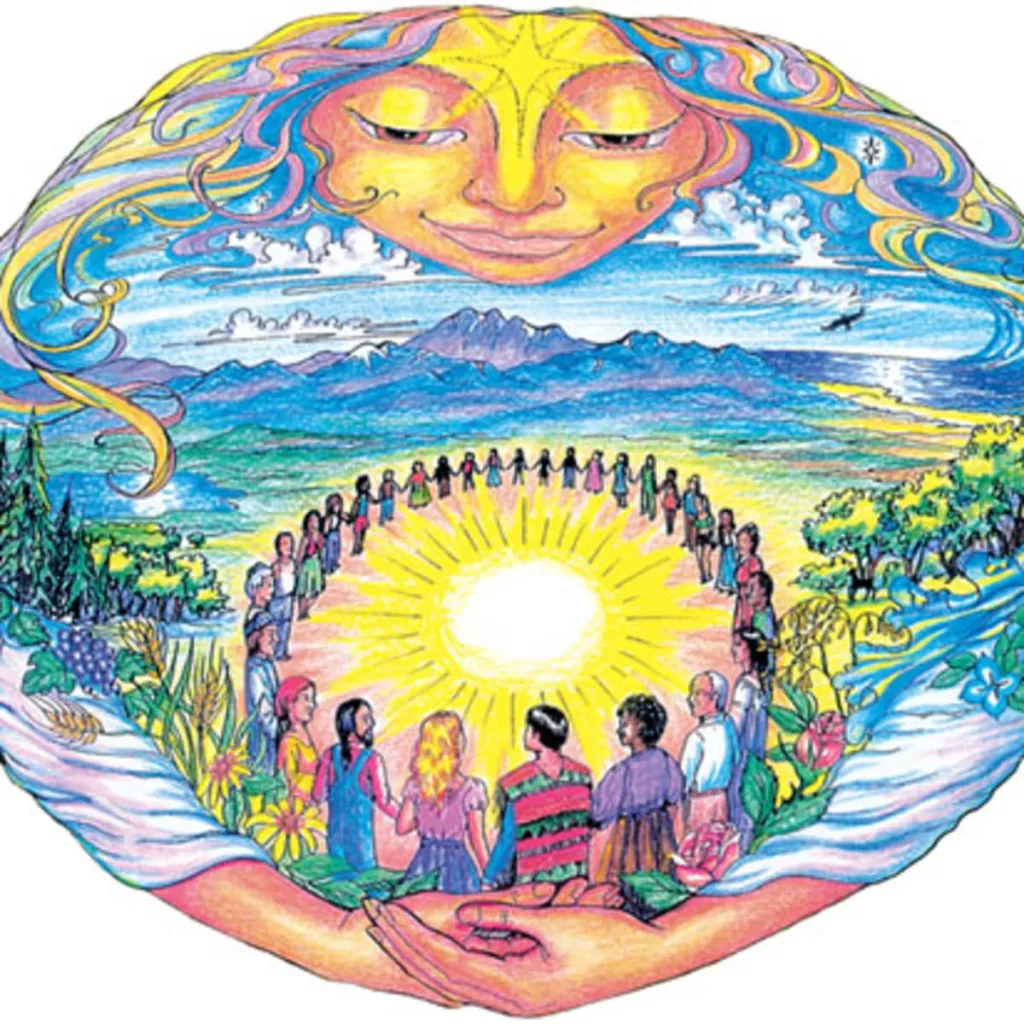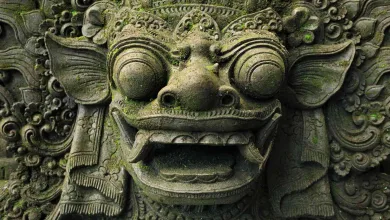New Age Religions
New Age is an umbrella term for a host of recent religious startups, most originating since 1970. The name comes from the expected dawning of a new age of human consciousness and development, often referred to as the Age of Aquarius from its connection to astrology. Although not original with her, Marilyn Ferguson’s The Aquarian Conspiracy, considered by many the “bible” of New Age religions, did much to popularize the term.
There is no New Age “central headquarters” or mother organization. Most have developed independently of (sometimes in competition with) other, similar movements. They now exist in a vast network of autonomous groups held together by a few common beliefs.

New Age religions exhibit a wide variety of organizational variation as well. There are New Age churches with clergy, buildings, and regular services. Some practices, on the other hand, while based on the same core beliefs as other New Age faiths, may not seem connected to any particular organized religion at all. The use of crystals for physical healing and emotional improvement is one example. New Age books number in the thousands, and New Age bookstores everywhere in the West also offer products of many kinds to aid people in their quest for fulfillment. Shirley MacLaine’s autobiographical works on reincarnation and other New Age topics have sold in the multimillions.
While there is tremendous variability in beliefs and practices, all may be characterized by the foundational belief that the answers to life problems lie within the person, not in any transcendent being or revealed scripture. This is connected to an underlying monistic worldview, adapted from Hinduism. There is no transcendent deity because we all are deities. The use of external tools (like crystals) or techniques are primarily to draw out the potential within us.

In some cases, spirit guides may be sought through meditation or other techniques, but these are not “saviors” in any sense. With help, a person must achieve individual goals. According to New Age author Gary Zukav’s Soul Stories, “Nonphysical teachers do not tell you what to do. They help you see your options. They help you think through choices.… Then you decide what to do” (36–37).
Something else that characterizes most New Age religions is belief in reincarnation and karma. Connected to this, again, is the necessity of finding one’s own path to the goal, which may be called enlightenment, salvation, or unity with the divine (among other expressions). Reincarnation makes allowance for mistakes along the way, since one never needs to admit failure. If a person doesn’t achieve the goal this time around, there will always be another opportunity to get it right.
Development of New Age religions came from profound disaffection with both formal, revealed religion—particularly Christianity—and Secular Humanism, which failed to provide answers for humanity’s inner yearnings. During a time of cultural upheaval, the hippie movement, anti-Vietnam-War protests, and general rejection of traditional morality left many people seeking new answers to life’s questions. Many looked to the East. While New Age religions usually reject Hindu deities and most practices, the majority share with Hinduism its worldview regarding the human soul and reincarnation. Some Buddhist beliefs also have found their way into New Age religions.
As New Age has grown and become more mainstream, it has shed its bell-bottomed, paisley-shirted image. Followers are more likely to be successful businesspeople in expensive suits. Ads for New Age products, once limited to specialty publications, now appear in regular media. Delta Airline’s Sky magazine recently carried a full-page ad for the Q-Link, an acrylic pendant selling for $99.95 (or $259.95 in the executive, titanium version) and guaranteed to improve your energy and release your full potential while “shielding you from the harmful effects of EMF radiation.”
At the same time, the language in which New Age beliefs and practices are communicated has recently changed. Former spirit mediums are now “channelers,” or guides, or energies. Shamanistic practices (performed by those once known as witch doctors) are now “transformational therapies.” Buddhist or Hindu forms of meditation are now “centering” or “grounding.” While the terminology may be new, the underlying beliefs and most practices are based on ancient religious traditions.
One controversial change has been the widespread acceptance of yoga, now touted as stress-relieving exercise. Even some Christian churches host classes. Clothing and mats for yoga workouts are available everywhere. Christian and Muslim practitioners claim it is strictly physical exercise and has no religious connections. Others remain unconvinced. Yoga originally was a form of Hindu religious practice designed to allow a person closer communion with one’s gods. Any physical benefit was at best secondary.
It’s impossible to list all groups that might be considered New Age. A few actually use New Age in their names, most do not. The Vedanta Society and the Divine Light Mission are among the older groups, predating 1970. Scientology, Urantia, Arica, Eckankar, and The Forum (EST) are among the newer ones. Many initial organizations openly embraced Hindu thought and teaching. As the movement developed over the past four decades, it has outwardly distanced itself from its Hindu roots. Many of the newest forms make an effort to appear scientific or psychological rather than religious.

An Extra Minute
In his early days as Acharya Rajneesh, a correspondent once asked Osho (the current name for the late Bhagwan Shree Rajneesh) what his ten commandments were. In reply, he noted that it was difficult to say because he was against any kind of commandment, but “just for fun” he set out the following:
1. Never obey any command unless it is coming from within you also.
2. There is no God other than life itself.
3. Truth is within you; do not search for it elsewhere.
4. Love is prayer.
5. To become nothingness is the door to truth. Nothingness itself is the means, the goal, and attainment.
6. Life is now and here.
7. Live wakefully.
8. Do not swim—float.
9. Die each moment so that you can be new each moment.
10. Do not search. That which is, is. Stop and see.
Morgan, G.R. (2012) Understanding World Religions in 15 Minutes a Day. Minneapolis, MN: Bethany House Publishers, pp. 166–169.



